Barbet Dog Breed Information
The Barbet, deeply rooted in French history, offers a rich glimpse into the development of dog breeds. It combines a working dog’s endurance with a family pet’s friendly demeanor. This breed is often overlooked in favor of more common ones but has unique qualities that deserve attention.
The Barbet’s non-shedding coat is a boon for those with allergies, while its smarts and ease of training make it a multifaceted companion. Yet, these traits result from a complex mix of genetics, upbringing, and history defining a Barbet. When considering this breed for a pet, it’s crucial to assess how well its characteristics fit into contemporary life and the types of homes they enter.
Rooted in French heritage and embodying a well-balanced temperament, the Barbet adapts well to various lifestyles. This breed’s allergy-friendly coat and keen intelligence make it not just a pet but a family member capable of participating in all activities. However, looking beyond these features is essential to understand the breed’s true nature.
The Barbet’s background and the interplay of its genetics and environment have shaped the breed over time. Prospective owners should weigh the breed’s needs against their ability to provide the right home, considering the realities of modern pet ownership.
Key Takeaways
- Barbets are French dogs with non-shedding coats.
- Easy training and intelligence make Barbets ideal companions.
- Understanding a Barbet’s needs ensures a happy home fit.
Quick Facts
The Barbet is a versatile medium-sized dog from France, standing between 19 and 24.5 inches tall and weighing 35 to 65 pounds. This puts them squarely in the Sporting Group, known for their energy and love of activity. Robust and well-proportioned, the Barbet is a hit among dog owners who enjoy an active lifestyle thanks to its proficiency in sports and swimming. These dogs are in it for the long haul, with a life expectancy of 12 to 14 years.
Their unique coat is long, thick, and curly and demands consistent grooming to avoid tangles and maintain its water-repellent properties. This is particularly important for a natural breed in aquatic environments. Barbets are generally healthy, but it’s worth noting they can be prone to hip dysplasia and progressive retinal atrophy. Choosing a responsible breeder can help reduce these health risks.
The Barbet’s intelligence and affectionate nature make it perfect for families who can provide plenty of play and mental challenges.
Barbet Dog Breed Pictures
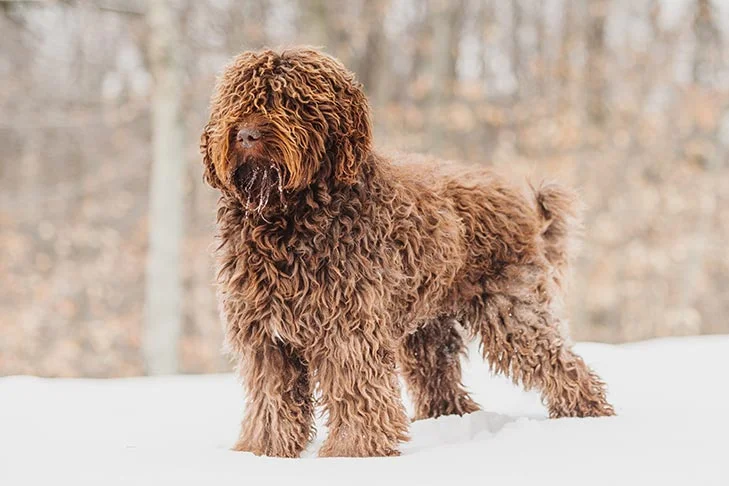
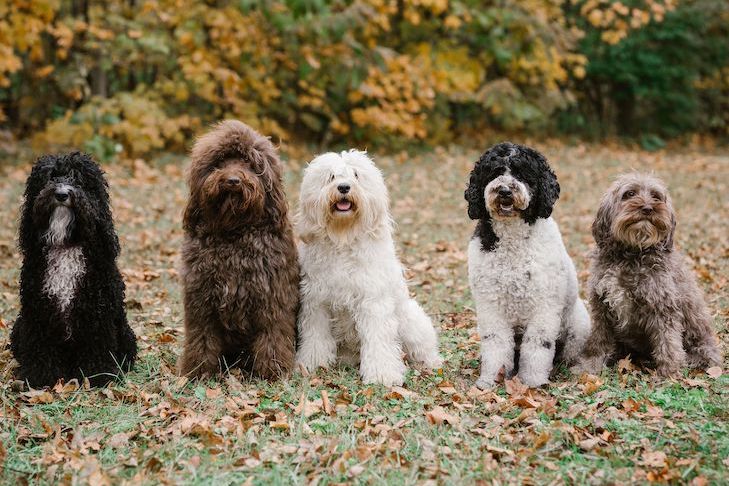
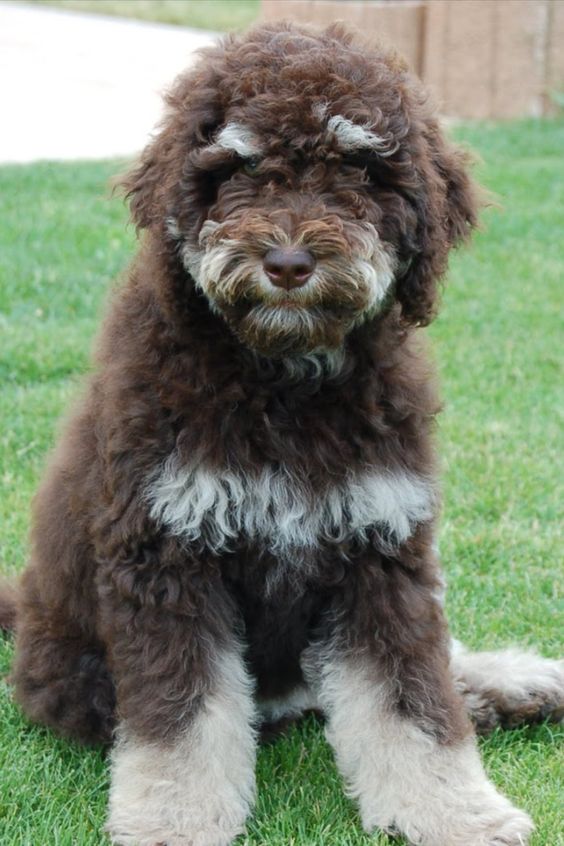
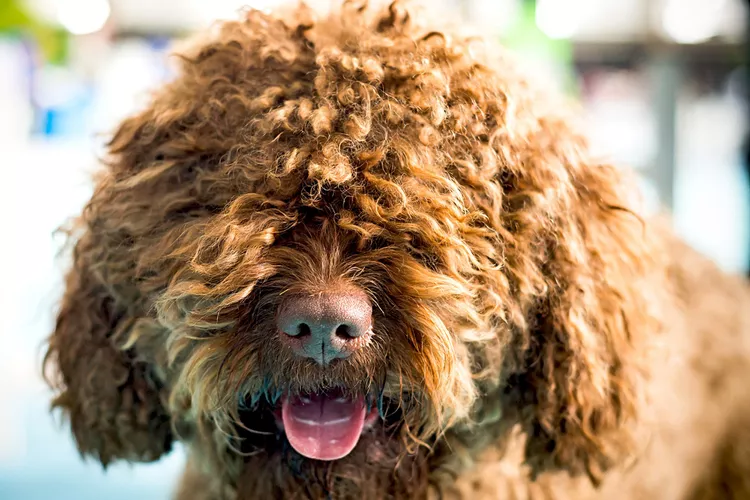
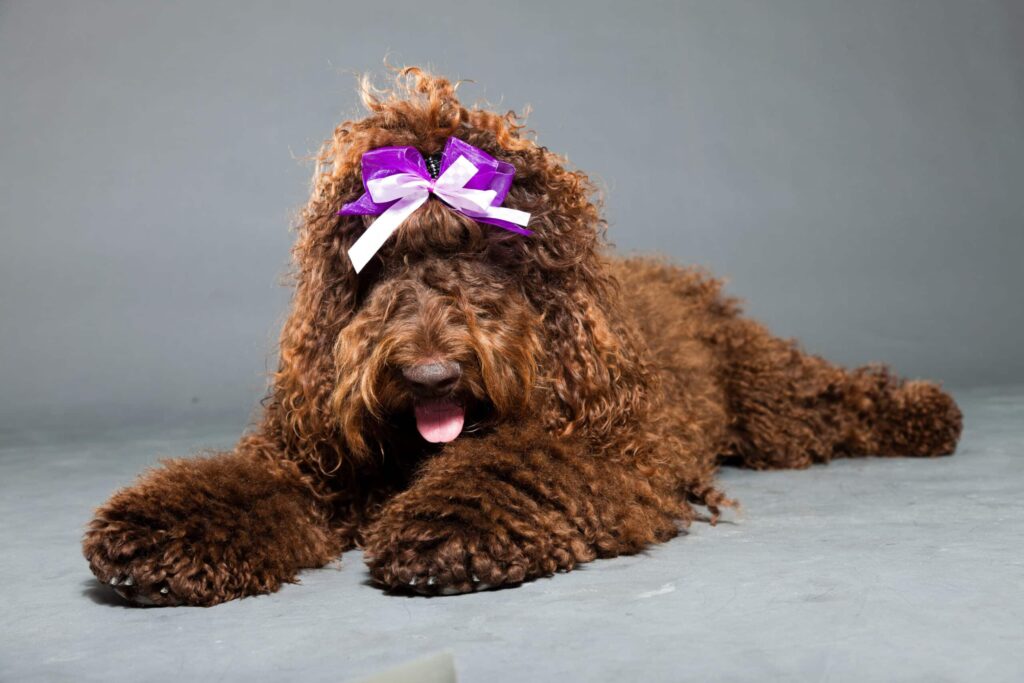
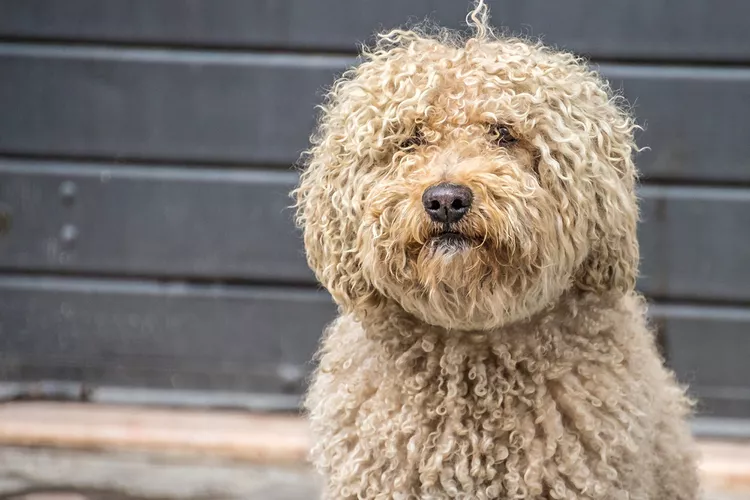
Overview
The Barbet is a dynamic, skilled dog breed with roots in France, initially bred for hunting waterfowl. Known for its webbed feet, this medium-sized dog is an excellent swimmer. The breed is known for being friendly and good-natured, which makes it a perfect fit for family life.
Its distinctive, long, curly coat requires consistent grooming to avoid tangles. The Barbet’s fur comes in various colors, including black, brown, and white. These dogs are intelligent and easy to train, and they do best when they’re mentally and physically busy. They are friendly animals and get along well with children and other pets.
Like all breeds, the Barbet may be at risk for specific health issues, such as hip dysplasia. It’s vital to ensure regular check-ups with the vet to keep them healthy. The Barbet Club of America is the breed’s guardian in the U.S., promoting ethical breeding and sharing health information to protect the breed’s health and future.
Barbet Key Traits
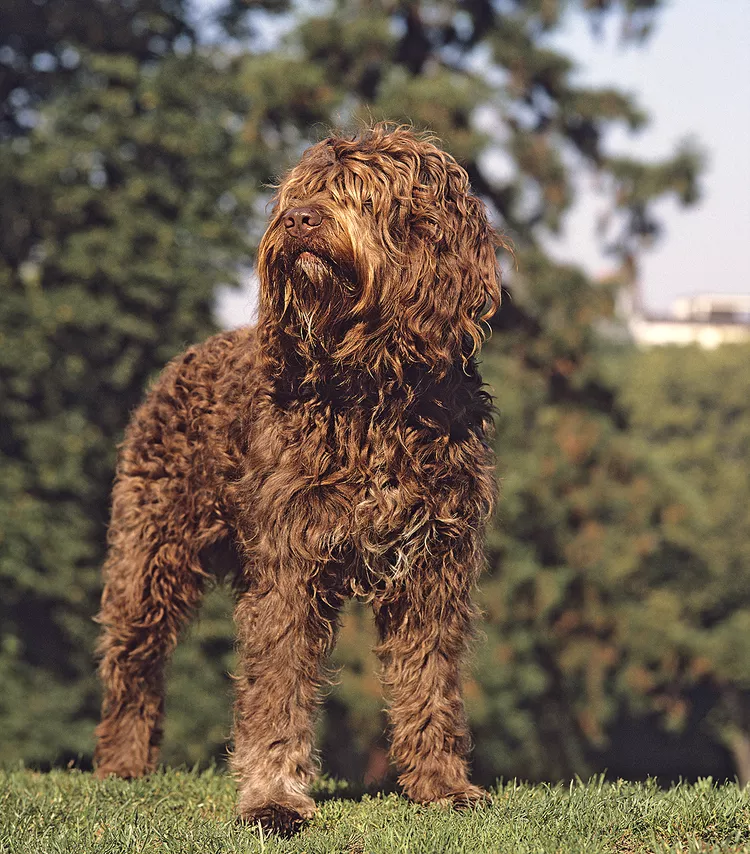
Barbet dogs are known for their thick, curly fur and a personality that’s full of life. These medium-sized dogs are intelligent and friendly, making them great for both hunting and as loving pets. Originally bred in France for retrieving game from water, Barbets are excellent swimmers and can handle harsh conditions. They’re great with kids and other pets, making them ideal family dogs.
The Barbet breed has a long history in France and is one of the country’s oldest water dog breeds. They almost disappeared entirely but survived thanks to the efforts of dedicated breeders. While their coat is visually appealing, it requires a lot of care to keep it in good shape and prevent tangling.
Barbet owners should be aware that these dogs may be prone to health problems like epilepsy, eye conditions, and joint issues. Barbets need plenty of mental and physical activities to keep them sharp and fit. They can adapt to living in apartments but do best when they exercise regularly. Their curly coats are well-suited for cooler weather.
| Trait | Description | Consideration |
|---|---|---|
| Coat | Thick, curly, needs frequent grooming | High maintenance |
| Personality | Happy, friendly, smart | Needs activities to stimulate the mind |
| Adaptability | He needs to be active every day | He needs to be active every day |
Barbet Breed Information: Origins Unveiled
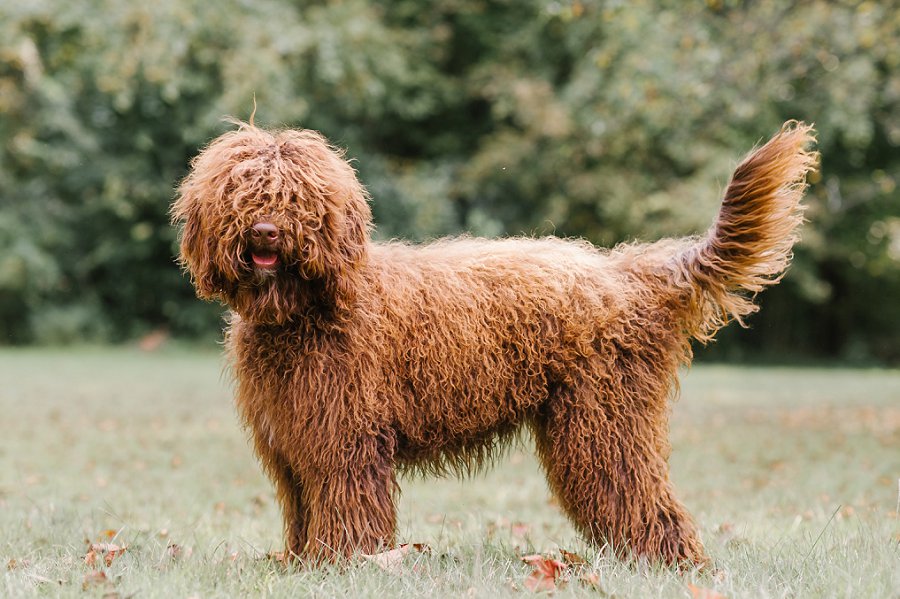
The Barbet’s roots stretch back to 16th-century France, marking it a venerable breed with significant historical impact. These dogs became integral in developing several dog breeds we see today. Their journey from medieval France, where they were first established, to their role in waterfowl retrieval demonstrates their longstanding utility and companionship.
Early History of the Barbet
In the early days, the Barbet was renowned for retrieving waterfowl, a highly valued skill in medieval France. They were companions and workers, assisting hunters by retrieving game from water with their waterproof coats.
Ancestral Contributions of the Barbet
The Barbet’s genetic blueprint has been instrumental in creating many breeds that came after. Researchers have traced their lineage through historical records, highlighting their impact on the canine world.
Progression of the Barbet Breed
After the World Wars, enthusiasts worked to define the breed standard for the Barbet, ensuring its survival and promoting its unique characteristics. Today, efforts are focused on maintaining genetic diversity within the breed, showcasing a renewed interest in these rare dogs in North America.
Early Barbet History
Exploring the history of the Barbet reveals that this breed has been a staple in France since the 16th century, treasured for its waterfowl hunting skills. The breed’s name, Barbet, comes from the word ‘barbe,’ the French term for beard, which suits their distinctive facial hair. These dogs are excellent swimmers, but their numbers dwindled alarmingly around the time of the World Wars. Despite this, the Barbet has made a comeback, with around 500 living in the United States and another 1,500 across Europe.
As an ancestor of popular breeds such as the Poodle and the Bichon Frise, the Barbet is known for its adaptability and suitability as a family pet. While they have gained popularity, securing full recognition from the American Kennel Club has been challenging, with significant progress expected in the early 2020s.
Ancestral Barbet Lineage
The Barbet’s history in France is critical for understanding how many breeds of water dogs came to be. Originating in the 16th century, the Barbet was primarily used for hunting and retrieving waterfowl, which shaped its physical and behavioral traits. These traits were honed over time to excel in water, making the Barbet a key ancestor to breeds such as the Poodle and Bichon Frise. These connections help us trace water dogs’ evolution and varying abilities today.
Recognizing the Barbet’s contribution to breed development is essential. It shows how this breed’s history has influenced the abilities of modern water dogs. The Barbet’s skills in retrieving game from water have been passed down, leading to various specialized breeds. Understanding this lineage sheds light on the shared genetics and the Barbet’s role in diversifying these dogs.
Barbet Breed Evolution
Studying the history of the Barbet breed sheds light on the creation of many popular water dog breeds. This medium-sized, versatile breed hails from France and has been crucial for hunters seeking waterfowl since the 1600s. The breed nearly disappeared after the global conflicts of the 20th century, but enthusiasts helped it make a comeback, and it spread to North America. Today, there are about 500 Barbets in the United States and around 2,000 across the continent.
The Barbet’s genetic makeup has influenced the development of breeds such as the Poodle, Bichon Frise, Otterhound, and Newfoundland. These breeds excel in dog sports, including dog shows, agility competitions, and dock diving activities. Barbets have a distinct curly coat that needs regular grooming. Owners and breeders must watch out for health issues like epilepsy and hip dysplasia in the breed.
Temperament Traits
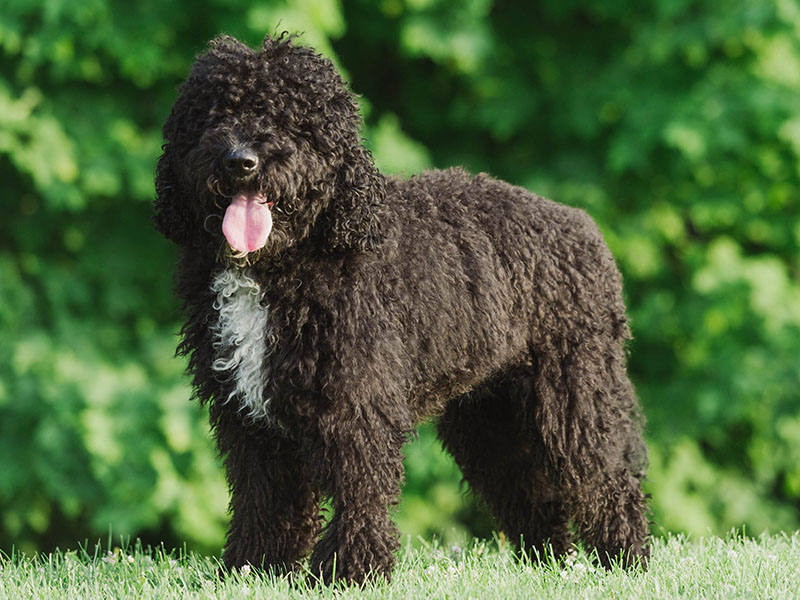
When assessing the size of the Barbet, we look at the typical height and weight that classify it as a medium-sized dog. The breed shows a notable size range that can be altered by gender, with males often more significant than females. Observing Barbet’s growth from a pup to a full-grown dog helps us understand the best proportions for their well-being and functionality.
Size Metrics:
We use specific techniques to measure a dog’s height and weight accurately. Size can differ between males and females and vary due to genetic differences.
Height and Weight Range:
Breed guidelines provide standard sizes for both male and female Barbets. Various factors, such as genetics and environment, can influence the breed’s size.
Growth Chart Insights:
Different stages of growth mark particular developments. A Barbet’s diet and overall health are critical to their growth and adulthood.
Barbet Size Metrics
When looking at the size of the Barbet, we see apparent differences between males and females. Males typically stand 22.5 to 25 inches at the shoulder, whereas females usually range from 20.5 to 24 inches. In terms of weight, these medium-sized dogs can be anywhere from 37 to 62 pounds.
The Barbet is a sturdy breed, sporting a thick, curly coat that can be found in colors like black, brown, and fawn. Regular grooming is a must to keep their coat healthy and prevent knots.
These dogs were initially bred to retrieve waterfowl, and over time, breeders have focused on developing their size and strength to improve their hunting abilities in the water.
Height and Weight Range
Adult Barbets stand at a height of 19 to 24.5 inches at the shoulder and have a weight range of 35 to 65 pounds. These medium-sized dogs are well-built and proportionate, which suits them well for various sports.
Their size is ideal for physical activities like dock diving and makes them excellent family companions. They live for about 12 to 14 years, and their adaptable nature allows them to enjoy a wide range of activities while maintaining a healthy lifestyle.
Growth Chart Insights
Tracking the growth of a Barbet from its early days as a puppy to its full size as an adult can tell us a lot about its health and what it needs to stay healthy. A medium-sized breed, the Barbet shows a significant increase in size during its first year of life. Male Barbets usually reach a height of 22.5 to 25 inches at the shoulder, while females typically measure between 20.5 to 24 inches. They weigh anywhere from 37 to 62 pounds, with males tending to be the heavier of the two.
Genes, diet quality, and overall health shape a Barbet’s growth. It’s essential to monitor their growth, especially considering their vulnerability to conditions like hip dysplasia. Regular check-ups with a vet and a keen eye on their growth curve ensure that your Barbet grows into a solid and healthy adult dog. Keeping tabs on their development with a breed-specific growth chart is a practical way to ensure your Barbet stays on the right path.
Standard Proportions
The Barbet is a well-built, medium-sized dog that sticks to a set of breed standards for size. Males should be between 22.5 and 25 inches tall at the shoulder, and females a bit shorter, ranging from 20.5 to 24 inches. A healthy Barbet typically weighs between 37 and 62 pounds. These measurements help keep the breed balanced and fit for their original job as skilled waterfowl retrievers.
This breed is known for its strength and agility, which are crucial for its historical role. Along with its physical abilities, the Barbet’s coat is a hallmark of the breed. It’s long, dense, curly, black, brown, and fawn colors. But those curls need regular care to stay nice and neat.
Keeping to these size and grooming standards is essential as it affects the dog’s looks, health, and ability to perform the tasks it was bred for.
Physical Build Characteristics
We examine Barbet’s physique and find a muscular, agile dog wrapped in a thick, curly coat. Males typically stand between 22.5 and 25 inches tall at the shoulder, with females slightly smaller, ranging from 20.5 to 24 inches. Their weight varies from 37 to 62 pounds, which reflects their solid build.
The coat, which can be black, brown, or white, is functional and attractive, requiring regular care to maintain its condition. The Barbet’s physical traits, including their stature, coat, and weight, reflect their ancestry as waterfowl retrievers and their ability to thrive in diverse settings.
Barbet Traits
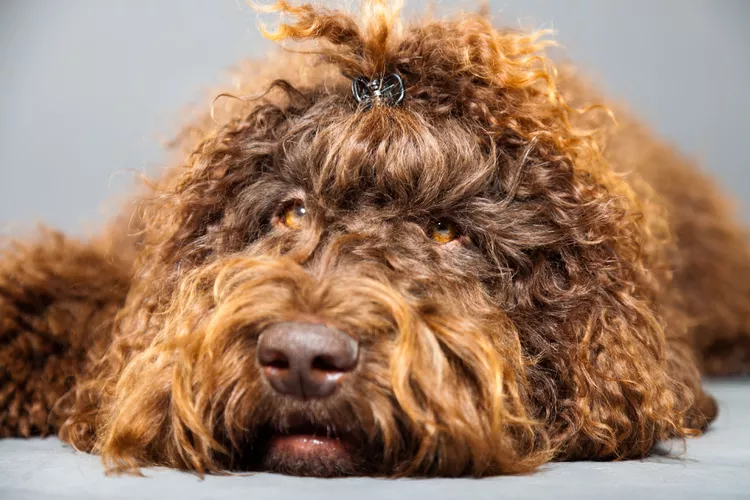
The Barbet is known for its dynamic mix of traits, shaped by genetics and upbringing, which creates a lovable and sometimes demanding personality. To tap into their high trainability and smarts, it’s essential to start training early and keep it regular. This helps them reach their full potential and avoid picking up bad habits. These dogs are inherently social and can adapt to many situations, making them great as family pets or working dogs. But their needs for social contact and the right environment must be met for them to thrive.
Family Bonds and Sociability
Barbets are naturally warm and friendly, making them great companions for families. They show a lot of love for their human pack and get along well with kids and other animals. However, it’s essential to introduce them to different people and situations early on to ensure they behave well as they grow.
Competent Learners Needing Stimulating Training
Barbets are quick learners that can master complex commands and tasks. They need training that keeps them thinking to prevent boredom and the trouble that comes with it. With their abilities, they often do well in activities like obedience, agility, and being therapy dogs.
Managing the Prey Drive
Barbets have an instinct to chase, which needs to be managed carefully. It’s important to supervise their interactions if they live with small pets. Also, when off the leash, it’s crucial to have a secure area so they don’t run off following their instincts.
Friendly Family Companion
Barbets are known for their loving and friendly personalities, making them perfect family pets. They create deep connections with people of all ages. Intelligent and easy to train, Barbets excel in dog sports and activities that groups like the American Kennel Club recognize. They are naturally good-natured, which means they get along well with other pets and everyone in the family.
They are also known for being joyful and energetic, making them excellent therapy dogs. But keeping them well-groomed and mentally stimulated is essential to keep them happy and healthy.
Socialization Needs
Socializing a Barbet is critical to their growth, ensuring they become well-mannered and flexible friends. Given their natural tendency to be pleasant and friendly, socializing is especially important for this breed. It is recommended to introduce them early on to various people, other animals, and different settings. This can lead to a balanced adult dog.
Structured walks and regular vet check-ups are part of this process, along with positive interactions with other dogs to encourage confidence and prevent fear or aggression.
Barbets typically enjoy the company of children, making it essential to give them positive experiences with kids. Organizing playdates, enrolling in dog training classes, and joining dog club events can significantly benefit Barbet’s social skills. These activities help reinforce good behavior in a managed environment.
Trainability and Intelligence
Barbet dogs are known for their impressive ability to learn and adapt to new commands and tasks. They are brilliant and possess strong problem-solving skills that set them apart. These friendly dogs respond well when trained with positive reinforcement, as they enjoy building a strong bond with their owners through interaction.
To keep a Barbet’s mind sharp and their behavior stable, it’s essential to provide them with regular mental and physical exercises. This keeps them from getting bored and helps maintain their mental and emotional well-being.
Prey Drive Considerations
Barbets have a strong instinct to chase after smaller creatures. This behavior is part of who they are, but it’s essential to manage it so that it doesn’t lead to problems. Owners need to be extra cautious when in places where small animals or local wildlife are around. This ensures these dogs don’t chase them, which could cause harm or scary situations.
Good training and regular socializing are essential to keeping a Barbet’s hunting instincts in check. Fun activities like playing fetch, running through agility courses, or tracking scents give these dogs a positive way to use their energy.
When Barbets are around other pets, keeping an eye on them is critical. A well-managed environment is necessary to protect all animals involved and use the Barbet’s prey drive responsibly.
Adaptability to Lifestyle
Training and managing a Barbet’s prey drive is vital. Their temperament makes them adaptable to different living environments. These dogs are generally calm and have occasional energy spikes, making them suitable for apartment living. Despite their medium size, they can comfortably fit in smaller urban spaces.
Barbets are friendly and get along well with both kids and other animals. Their playful and loving nature means they’re great for various activities, from playing fetch to providing comfort to their owners. They fit well into many households because of their versatility and friendly nature.
Barbet Genetic Health Concerns
The Barbet, with its amiable nature and luxurious coat, is a breed that captures the hearts of many. However, those considering adding a Barbet to their family should consider certain genetic conditions that can affect this breed. Ensuring the health and longevity of these dogs requires a commitment to responsible breeding.
Health Concerns in Barbets
Barbets may experience neurological disorders such as epilepsy, which can cause seizures. They are also at risk for hip dysplasia, a condition that affects the hip joint and can lead to pain and mobility issues. Eye conditions, like progressive retinal atrophy, are also known to occur in the breed and can result in blindness if not managed properly.
Managing Genetic Health in Barbets
Maintaining genetic diversity within the Barbet breed is vital to prevent these health issues. Breeders can help by selecting mating pairs carefully to reduce the incidence of genetic diseases. D.N.A. testing is a valuable tool that helps identify carriers of these conditions, allowing breeders to make informed decisions.
Proactive Health Strategies for Barbets
Regular veterinary check-ups are essential for early identification of health problems. Breeders play a critical role by following health testing guidelines promoting healthy puppy births. It’s also vital that Barbet owners are well-informed about the potential health issues their dogs may face and how to manage them.
Inherited Health Issues
Barbet dogs are susceptible to a few hereditary health issues, such as epilepsy, progressive retinal atrophy, and hip dysplasia. These conditions necessitate proactive health screenings from breeders.
Progressive retinal atrophy leads to vision loss, and hip dysplasia causes joint problems that can result in discomfort and difficulty moving. Epilepsy in these dogs manifests as repeated seizures.
Breeders must perform thorough health checks to reduce the risk of these health issues. These should include tests for hip and elbow structure and eye health. The Barbet Club of America promotes sharing these health test results for transparency.
Potential Barbet owners should understand these health risks and the care involved before bringing home a puppy.
Common Genetic Disorders
Proactive health screenings are vital when it comes to Barbet dogs, which are prone to genetic disorders like epilepsy, progressive retinal atrophy, and hip dysplasia. Breeders must perform thorough testing on hips, elbows, and eyes to reduce the chances of these conditions being passed on.
People thinking about getting a Barbet should be aware of the possible health risks and the costs that might come with managing these genetic disorders. Regular check-ups with the vet are vital to catching and treating any health issues early.
Owners should educate themselves on the signs of these conditions to provide the best care for their Barbet. Knowing what symptoms to look for can help in addressing health issues promptly.
Responsible breeding and ownership practices can go a long way in ensuring these dogs’ long-term health and happiness.
Preventative Health Measures
To protect the health of Barbet dogs, it’s essential to keep up with regular health checks. These checks should include genetic screenings for issues like epilepsy, progressive retinal atrophy, and hip dysplasia. Barbet dogs aren’t familiar, so breeders and pet owners must be extra careful with their health.
Responsible breeders should test for the health of hips, elbows, and eyes. People looking to get a Barbet should ensure these health checks are done before taking a puppy home. The long wait times for a Barbet puppy, sometimes over a year, and the price, between $2,500 and $4,000, show how important it is to keep the breed healthy.
Following strict health testing guidelines is critical to avoiding inherited diseases in these dogs.
Barbet Maintenance Essentials
Caring for a Barbet involves understanding their unique needs to keep them healthy and happy. Regular grooming is crucial to maintaining their thick, curly fur, and a well-thought-out diet is vital for their well-being. Keeping them active, monitoring their health, and providing ongoing training ensure this intelligent and lively dog thrives.
Grooming Must-Dos
Brushing a Barbet’s coat often is essential to avoid knots and tangles. The proper grooming tools, like a slicker brush or a comb, will make this task easier. Keeping their ears clean and their paw pads trimmed is also essential to prevent issues.
Healthy Eating Habits
Understanding a Barbet’s energy needs helps determine how much food they require, which varies with age, size, and activity. A diet rich in vital nutrients keeps them in top condition. Regular feeding times and controlled portions will help prevent overeating.
Exercise for a Healthy Mind and Body
Barbets need daily physical activity to match their high energy levels. Regular exercise also keeps their mind sharp and behavior in check. Since they love water, swimming is a great way to fulfill their exercise needs and let them indulge in their love for swimming.
Grooming Routine Tips
Maintaining the health and appearance of a Barbet’s curly fur is an ongoing task that involves frequent brushing to avoid knots and tangles. The care of their distinct curly coat is a substantial commitment, often requiring professional grooming to manage their distinctive look properly. Regular vet check-ups are also essential for this breed, which can be prone to health issues such as epilepsy, progressive retinal atrophy, and hip dysplasia.
Barbet owners should be prepared for the financial and time investment needed to care for these dogs, including the possibility of paying more and waiting longer for a responsibly bred puppy. A solid grooming routine is vital for the breed’s journey toward recognition by organizations like the AKC.
Barbet’s coat care is a significant responsibility, and professional grooming is recommended to keep their fuzzy appearance in check. Health check-ups are essential due to the breed’s susceptibility to specific genetic conditions. Owning a Barbet means being ready for a substantial commitment, both in terms of money and time, especially when seeking a well-bred puppy. A well-maintained grooming routine is crucial for the breed’s ongoing recognition efforts.
Nutritional Requirements
Proper nutrition is critical for the health and energy of a Barbet. It’s essential to tailor their diet to their needs, which vary with size, activity level, and age. Consulting a vet can help you create the best meal plan for your dog.
High-quality dog food is crucial, especially for an active Barbet during their most energetic years. As they age, they may become less active, and their diet may need to change to avoid weight gain and related health issues like hip dysplasia. Including nutrients that support joint health is also beneficial.
Regular vet visits are essential to ensure your Barbet’s diet meets their changing health needs. This is key to their longevity and overall well-being.
Daily Exercise Needs
For the health and happiness of a Barbet, a good diet is just the start. These dogs need regular exercise—about 1 to 2 hours daily—to stay in shape. They love active sports like agility or dock diving. These activities keep them fit and sharp mentally.
Swimming and games of fetch are great for Barbets, too. They tap into the breed’s natural love for water. Training sessions and interactive games keep their minds active and prevent any trouble caused by boredom.
Regular exercise is vital to keeping this intelligent and lively breed at its best.
Health Monitoring Priorities
Grooming the Barbet is crucial to keep their thick, curly fur free from tangles and maintain their overall coat health. Their care routine should regularly include visits to the vet for check-ups and genetic tests, mainly for hip dysplasia, a common genetic issue in these dogs.
Following a consistent exercise plan is good practice to help the Barbet stay fit and reduce the risk of joint problems.
It’s also essential to feed the Barbet a quality diet that suits their age and level of activity. Watch their behavior closely; sudden changes like more aggressive or anxious actions need quick intervention. This helps Barbet’s mental state and ensures everyone’s safety.
Training and Socialization
Starting early with training and socialization is critical for a well-behaved and friendly Barbet. Using positive reinforcement methods is crucial for teaching this breed effectively. This approach focuses on rewarding good behavior to encourage more of it. Online resources such as A.K.C. T.V. and the A.K.C. S.T.A.R. Puppy program provide structured guidance for puppies as they grow.
Choosing the right dog sport for a Barbet should match the dog’s natural talents and interests to keep them engaged and increase their chances of success. When facing training or behavior challenges, it’s essential to use the right resources and seek expert advice to address the issues and keep the training on the right path.
In raising a Barbet, remember that a structured health and grooming routine is also vital. It’s not just about teaching commands but also about ensuring your Barbet is healthy. If you’re unsure about how to start with training or which sport to choose, look for professional trainers who have experience with the breed. They can provide personalized advice and support that is beneficial for your dog’s learning and development.
Always prioritize the well-being of your dog and build a strong, loving relationship through consistent and positive training practices.
Barbet Dietary Requirements
Caring for a Barbet’s dietary needs is crucial to their overall well-being and supports their energetic nature. Their diet should include proteins, fats, carbohydrates, essential vitamins, and minerals. It’s important to calculate the calories they need based on how much they exercise every day.
Barbets may experience food allergies, so it’s necessary to pinpoint and steer clear of ingredients that cause them trouble. If needed, opt for diets with a limited number of ingredients or those that are hypoallergenic.
Creating a feeding plan that works for your Barbet involves setting a meal schedule that suits their age, size, and how active they are. It’s also intelligent to align meal times with their exercise and rest periods to promote better digestion and energy use.
Nutritional Needs
Maintaining the health and energy of a Barbet dog requires a nutritious diet that includes lean proteins, good fats, and complex carbs suited to their age and how much they exercise.
As water-loving dogs with muscular frames, Barbets need a well-rounded mix of nutrients to support their active way of life. Giving them the right vitamins and minerals is essential for their overall health.
A vet can help determine the right amount of food to give them to prevent them from becoming overweight, a common issue for this breed.
Combining a healthy diet and regular exercise is vital to keeping a Barbet in shape.
Common Food Allergies
For Barbets’ health and energy, a well-rounded diet is vital. However, these active dogs can be sensitive to specific ingredients, so it’s crucial to watch out for food allergies when preparing meals.
Barbets, recognized for their love of water and muscular build, might react badly to foods like chicken, beef, dairy, wheat, or soy. Choosing a hypoallergenic diet with simple ingredients or without grains can help prevent adverse reactions. Introducing less common proteins such as venison, duck, or salmon into their diets can supply vital nutrients and minimize the chance of allergies.
To tailor a Barbet’s diet accurately, a vet can run allergy tests to pinpoint the exact causes. When picking out commercial dog food, it’s essential to read labels carefully to ensure they meet a Barbet’s nutritional needs without the risk of allergens.
Ideal Feeding Schedule
Creating a regular feeding schedule for your Barbet is vital to keeping them healthy and energetic. Aim to feed your dog twice daily, once in the morning and once in the evening.
Barbets are medium-sized dogs that need a diet suited to their specific needs, depending on their age, how much they exercise, and their metabolism. Measuring their food carefully is essential to prevent overeating while ensuring they get all the necessary nutrients.
Choose a high-quality dog food that meets your Barbet’s nutritional requirements to keep them in top shape. Fresh water should always be available to support hydration, especially after meals and during exercise.
Work with your vet to determine the best diet for your dog, and discuss if any supplements are necessary to support their health over time.
